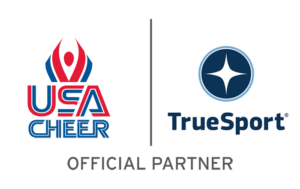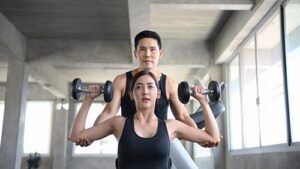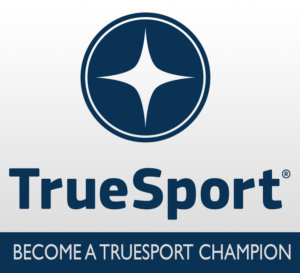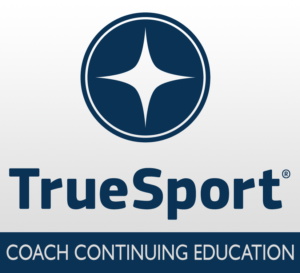6 Practical Ways Athletes Can Set Goals around Physical Wellness
USA Cheer has partnered with TrueSport, to provide new educational tools to equip coaches, parents and young athletes with the resources to build life skills and core values for success in sports and in life. TrueSport, a movement by the U.S. Anti-Doping Agency, inspires athletes, coaches, parents, and administrators to change the culture of youth sport through active engagement and thoughtful curriculum based on cornerstone lessons of sportsmanship, character-building, and clean and healthy performance, while also creating leaders across communities through sport.

6 Practical Ways Athletes Can Set Goals around Physical Wellness
 While it’s tempting to set all your goals for the season around specific athletic performances, goals that are oriented around wellness can make you both a stronger athlete and a healthier human. Simple changes to your daily routine, like making more time for sleep or eating the right snack after practice, can have immediate and long-term benefits, including helping you recover faster, avoid injury, and improve your strength and endurance.
While it’s tempting to set all your goals for the season around specific athletic performances, goals that are oriented around wellness can make you both a stronger athlete and a healthier human. Simple changes to your daily routine, like making more time for sleep or eating the right snack after practice, can have immediate and long-term benefits, including helping you recover faster, avoid injury, and improve your strength and endurance.
Here, Dr. Michele LaBotz, a TrueSport Expert and sports medicine physician, shares six simple goals to set around sleep, recovery, nutrition, and strength training that will improve your overall wellness and support your athletic goals.
1. Get Enough Sleep
 Did you know that teenagers are actually supposed to get 8 to 10 hours of sleep every night for optimum health, not the 7 to 9 hours recommended for adults? And did you know that children 6-12 years old should get 9-12 hours of sleep each night? That’s right: You need more sleep. “More and more evidence is coming out on the importance of meeting these sleep recommendations for injury prevention, athletic performance, and overall mental wellness,” says LaBotz.
Did you know that teenagers are actually supposed to get 8 to 10 hours of sleep every night for optimum health, not the 7 to 9 hours recommended for adults? And did you know that children 6-12 years old should get 9-12 hours of sleep each night? That’s right: You need more sleep. “More and more evidence is coming out on the importance of meeting these sleep recommendations for injury prevention, athletic performance, and overall mental wellness,” says LaBotz.
If you are currently getting less than these recommended amounts, LaBotz warns that you may be chronically sleep deprived. The trick with chronic sleep deprivation is that you do not actually feel tired. Although cutting back on sleep for a night or two may make you feel drowsy, going with less sleep over longer periods does not create that same feeling. You may feel well-rested, but your body is not. When you are chronically sleep deprived, your body sends false messages about how awake you feel.
The challenge for many young athletes is that between school, sport, family, and friends, it often seems there are not enough hours in the day to get everything done. However, for athletes looking to optimize performance and minimize injury, LaBotz emphasizes that making sleep a priority is key. If you are not consistently getting the recommended amount of sleep, pick a week (or two) where you are going to follow a sleep schedule based upon the clock, and not on how tired you feel. You may need to gradually build up your sleep time over a few days, but after experiencing the changes sufficient sleep can deliver, most athletes feel that it is time well spent!
2. Get Enough Recovery Time
If you’re on a travel team and a school team, you may accidentally fall into the “no recovery days ever” trap, says LaBotz. This isn’t good for your body, which means it’s also not good for your long-term development as an athlete. You should have at least one recovery day per week, even if it means skipping a practice to make that happen. This is important for maximizing your physical and mental performance and reducing your risk of injury.
Often, coaches aren’t aware of how much extra work you’re doing with the other teams you’re on, and if they did, they wouldn’t recommend training as much as you are. Talk to your coach or athletic trainer about what your current total training load looks like and find out if you should be skipping certain sessions in favor of time off or less intense active recovery.
 3. Prioritize Strength Training
3. Prioritize Strength Training
“For the vast majority of sports, strength training should be part of training,” says LaBotz. “It should be built into your training week rather than an addition to everything else you are already doing.” If you are not currently involved in strength training, set a starting goal of doing strength work twice a week for 20 to 30 minutes.
If your coach hasn’t built it into your training plan already, talk to them about how you can best fit it in. You may also want to talk to an athletic trainer to help you build a routine that hits all the major muscle groups. Focus on technique and not just on how heavy the weights are! Remember, strength training should be part of your training for sport, and not just an “added on” activity.
4. Find a Recovery Protocol That Works
Some athletes love to foam roll their legs after a workout. Others prefer hopping in an ice-cold bath to soothe sore muscles. Some prefer doing an easy yoga flow. Find what works and feels good for you, and make time for it in your routine, says LaBotz. Set a goal of doing a few minutes of active recovery, particularly after a hard workout.
5. Improve Your Post-Workout Fueling
“For athletes who are training every day, it’s important to have a snack that’s rich in carbohydrates and includes a little bit of protein after practice,” says LaBotz. If you typically have dinner within 30 minutes of finishing practice, that’s usually plenty. But if it’s longer than that before you’re home and at the dinner table, you should have a snack on hand that you can eat when practice is over.
“Make sure you have something in your locker or something in your gym bag that you can eat or drink right after you’re done,” says LaBotz. This could be as simple as half of a sandwich, a carton of chocolate milk, a handful of trail mix, or some cheese and crackers. (Get more locker-friendly ideas here.)
 6. Have a Life Outside of Sports
6. Have a Life Outside of Sports
If you’re so busy playing sports that you never have time to see a movie with friends, or to participate in any other extracurriculars, it’s time to set a goal that actually takes you away from your sport. “You should have variety in your life,” says LaBotz. This variety protects your mental and physical wellness, as well as reduces the risk of burnout in sport.
Takeaway
In addition to setting goals for your athletic performance this season, consider setting some that focus on overall wellness. Goals around sleep, recovery, strength, and nutrition will ultimately make it easier to achieve your athletic goals—and make you a stronger, healthier human in the process.
What is TrueSport?
The TrueSport Champion Network is a community of coaches, parents, program directors, and athletes who believe in the power of youth sport to build life skills and core values for success both on and off the field. Join TrueSport Champion Network to help promote the positive values of cheer, dance, and STUNT!
The TrueSport Coaching Education Program empowers coaches—the most significant influencers in young athletes’ lives—with a transformative learning opportunity to obtain the knowledge and resources to cultivate, champion, and uphold the rich promise and highest potential of sport.
Additional Training Modules from TrueSport
USA Cheer is proud to partner with USADA’s TrueSport® to bring relevant educational content to the Cheer and STUNT community in order to promote a positive youth sport experience. We are excited to provide access to TrueSport’s experts that take coaching beyond skills and help truly develop the overall athlete by building life skills and core values for success on and off the mat, sideline, field, and court.
Feel free to share these resources with your coaching staff, parents, or athletes!
About TrueSport
TrueSport®, a movement powered by the experience and values of the U.S. Anti-Doping Agency, champions the positive values and life lessons learned through youth sport. TrueSport inspires athletes, coaches, parents, and administrators to change the culture of youth sport through active engagement and thoughtful curriculum based on cornerstone lessons of sportsmanship, character-building, and clean and healthy performance, while also creating leaders across communities through sport.
For more expert-driven articles and materials, visit TrueSport’s comprehensive library of resources.
This content was reproduced in partnership with TrueSport. Any content copied or reproduced without TrueSport and the U.S. Anti-Doping Agency’s express written permission would be in violation of our copyright, and subject to legal recourse. To learn more or request permission to reproduce content, click here.



